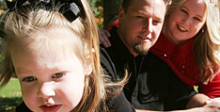Internal mini form
Contact Us Today
A life of love and bonding
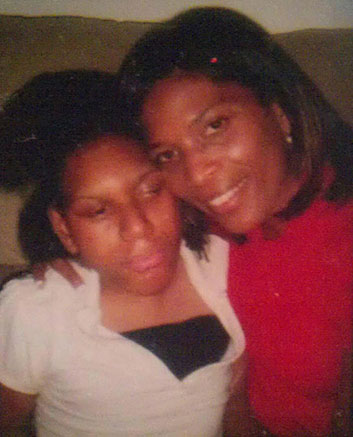
When Charlene Collins learned that her daughter had severe Cerebral Palsy, doctors told her that her daughter would not live long. Three decades later, life has more joy than both Charlene and Shevitta could have predicted.
They were words that Charlene Collins was prepared to hear that fateful day in 1984, but yet, when she heard her physician say them, she was shocked and bewildered all the same.
Charlene’s first-born daughter, a gorgeous two-year-old with big, brown eyes that she and her husband Darin named Shevitta, had a severe case of Cerebral Palsy. And if that wasn’t heartbreaking enough, the physician went on to say that Shevitta was profoundly mentally disabled, and that her life would likely be short.
“When she was a baby, Shevitta wasn’t doing things like trying to roll over, and it was many trips to the doctor later that she was finally diagnosed with Cerebral Palsy,” said Charlene, who lives with Shevitta in Denton, TX.
“I was devastated. I was in a state of shock. I expected to hear what I had heard before – that she was a little delayed. But to hear a doctor tell you that your daughter might not live; it’s heartbreaking. The first thing I thought of, and what stayed with me for a long time, was that I wasn’t going to have my daughter with me.”
After the doctor confirmed Shevitta’s condition, the physician said Shevitta would likely not survive her fifth birthday. He also suggested that if Shevitta did survive, she may be better off living in an institution or a home for disabled children.
“He said that it would just be a burden to me to take her home,” said Charlene. “But I knew I wasn’t going to put her in a home; I believed she would be better off with her family. Sending her away just wasn’t in my heart.”
What Charlene couldn’t have understood in the physician’s office in 1984 is that every day, children with Cerebral Palsy beat the odds. When a child is diagnosed with Cerebral Palsy, physicians use their skills and expertise to try to prepare parents for the future, realistically. But still, children often exceed expectations physically, developmentally, and emotionally.
For Charlene and Shevitta, that’s the scenario that has played out. Shevitta, although she is non-verbal and requires constant care, is now 30-years-old. She lives with her mother and enjoys the love, acceptance and support of her immediate and extended family.
Today, Charlene says she and Shevitta share a deep bond forged over the years – many of which the mother didn’t expect to have with her daughter.
“The most rewarding thing about my relationship with my daughter is that I still have her with me. For a long time I didn’t know how long she would be here.”
The aftermath of a diagnosis
After Charlene took Shevitta home, she took the challenges of being a mother of a child with a disability day by day. The 1980s was a time before Cerebral Palsy information – national and local resources, and social service information – was accessible on the personal computer.
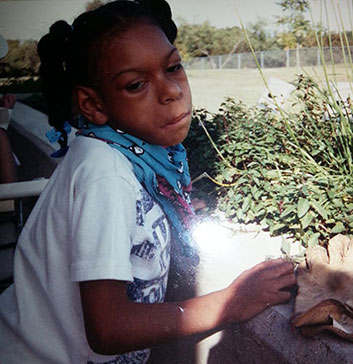
“I was devastated. I was in a state of shock. I expected to hear what I had heard before – that she was a little delayed. But to hear a doctor tell you that your daughter might not live; it’s heartbreaking. The first thing I thought of, and what stayed with me for a long time, was that I wasn’t going to have my daughter with me.”
– Charlene Collins, about receiving her daughter’s diagnosis.
“The most rewarding thing about my relationship with my daughter is that I still have her with me. For a long time I didn’t know how long she would be here.”
– Charlene Collins, three decades after receiving her daughter’s diagnosis.
The process of learning about Cerebral Palsy and identifying resources for her daughter was a long and frustrating process, Charlene admits.
“The biggest challenge was trying to get the services that we applied for and all of the paperwork in order while we were caring for our child,” she said. “It was overwhelming to get the right equipment for her, and the right services. She needed a wheelchair, and there were other issues.”
On top of that, she believed caring for her daughter was something that she had to do alone.
“I think I was being overprotective when I look back on it,” she said. “I felt that Shevitta was my baby, and that it was my situation, and I could handle it by myself. She was five or six years before I enrolled her in school. I think that some of it was a fear of a stigma; I didn’t know how they would react to her in the school system.
“I also didn’t think that anyone else could take care of her the way that I could,” Charlene said. “If I could do it again, I would have reached out for more help.”
There were also medical challenges along the way. In addition to caring the Shevitta’s every day needs, Shevitta suffered from seizures, contracted meningitis and had pneumonia at one point.
Charlene said she learned to accept care from family members who loved Shevitta, which has been a big help.
“I don’t have as much help as before she turned 18,” she said. “It’s pretty much family that helps me, but that’s good because I think people with disabilities do better when they are surrounded by family.”
Shevitta’s world
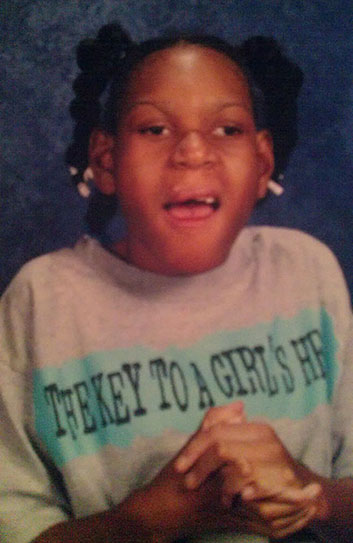
In her small Texas town, the young woman that physicians did not expect to survive past the age of five is now 30-years-old. Shevitta Collins still lives with her mother in Denton, and faces many of the same challenges she had as a child.
But Charlene said her daughter, despite her challenges, has many joys in her life. Although Charlene and Darin are now divorced, she still spends significant amounts of time with her father, and with her younger sister, Sharday.
“She loves spending time with her dad,” Charlene said. “Really, she likes spending time with family, and she’s always the center of attention.”
Charlene said she does what she can to make sure Shevitta maintains a high quality of life.
“Sometimes, it can be hard for her to go places because she has scoliosis, and one of her hips is deformed,” she said. “But we put her in her wheelchair to enjoy the outdoors – She likes to watch the dogs. And inside, we keep colorful balloons all over because she likes them.
“These may seem like small things to us, but for Shevitta, it’s a big deal,” Charlene said.
Although Shevitta is an adult, Charlene said she still surprises her mother.
“Because of Shevitta’s condition, it’s difficult for her to grip things,” she said. “But the other day the TV remote was within her reach, and when I came back into the room, she was holding it. I was like ‘whoa! You really picked it up.’”
Charlene said that she shares an intense bond with her daughter.
“I think parents develop a strong bond with a child because you’ve been through a lot with them,” she said. “The bond is there because the small things mean so much. If she holds a spoon for five seconds, it’s like ‘wow, you did that.’”
Charlene said there are many differences between what is out there to help parents cope with a new diagnosis than there was in 1984.
“There have been a lot of improvements on equipment, like [vehicle] lifts,” she said.
But the biggest changes have been in the area of technology and information, Charlene said.
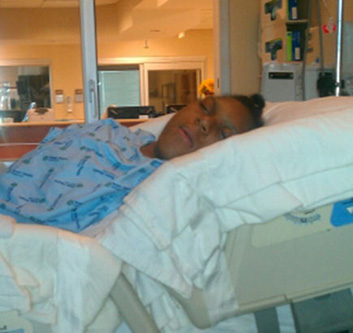
“There’s a lot of information out there online, and there are ways that you can connect with people that are having the same experiences you are,” she said. “You can talk to people and learn from their experiences. There’s so much out there now that I wish I had a long time ago, and that’s where I feel the real difference is.”
Charlene hopes that by sharing her story, people will learn and be inspired. Most importantly, Charlene hopes that people reach out.
“The one thing that I would tell people is to find a good support system. That will help you get through a lot of it,” she said. “I found myself with my health affected because I was trying to do it all.”
Today, Charlene said cherished moments come from every day activities, such as when Shevitta smiles when she’s helping her daughter put her arm through a shirt in the morning.
“She is my heart,” Charlene said. “And she’s my inspiration.”

Relationships and Cerebral Palsy
There’s an old saying that the measure of a person’s life is measured by how much they are loved. There’s no doubt about it: our relationships with others are the cornerstone of our ability to thrive and enjoy life. Relationships allow us to explore all of the facets of giving and receiving love, from the patient and protective concern shown between a parent and child to the fire and chemistry that happens between friends, mates and spouses. And the level of ability has nothing to with the level of love one is willing to give to or receive from another.


